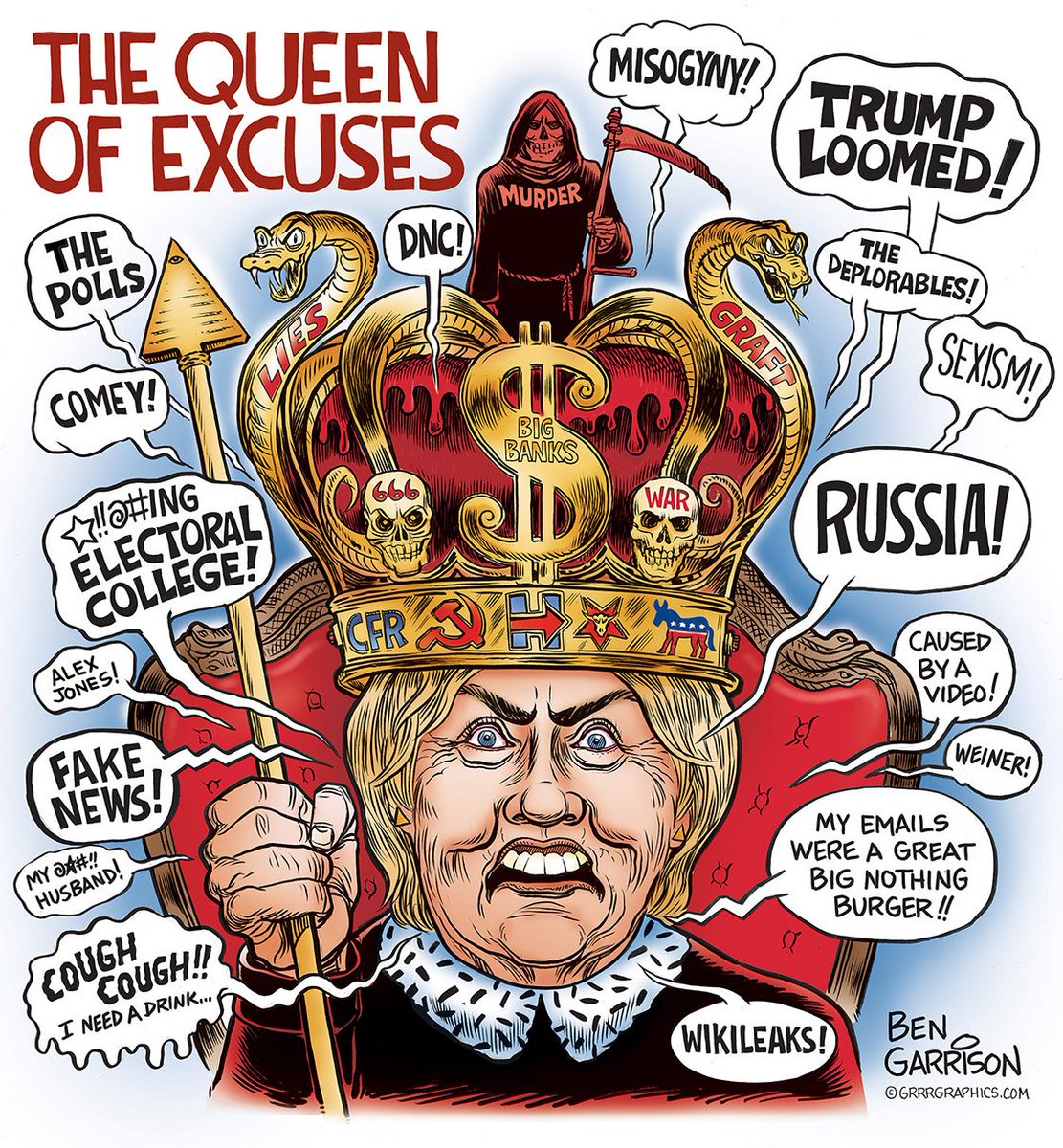I don't know if a lot of Americans get this, but Trump has, and to some extent still does, take a lot of direction from analysis of American media, demographics, and big data and.
During his campaign, Trump didn’t have a lot of ‘Here is my agenda, here is my narrative, I have to persuade people to it.
In a very simplistic way of putting it, the Trump world throughout his campaign was, “Let’s say a lot of different things, they don’t even necessarily need to be coherent, and observe, through the wonderful new platforms that allow you to observe how people respond and observe what works, and whatever squirrel everyone chases, that’s going to become our narrative, our agenda, our message.”
To an extent this appears to be Trump’s approach to the public eye concerning his statements and governing as well.
And it makes sense. He's been aiming for an eight year term from the get go.
Basically, he has, and continues his approach of electioneering in the age of big data and social media
If you don't understand, look at his process and what he has used to get into office.
He continues to use this approach, as he is looking to the 2020 election.
In the course of the 2016 election, the Trump campaign ended up relying on three voter databases: the one supplied by Cambridge Analytica, with its 5,000 data points on 220 million Americans including, according to its website, personality profiles on all of them; theRNC’s enhanced Voter Vault, which claims to have more than 300 terabytes of data, including 7,700,545,385 microtargeting data points on nearly 200 million voters; and its own custom-designed one, called Project Alamo, culled in part from the millions of small donors to the campaign and e-mail addresses gathered at rallies, from sales of campaign merchandise, and even from text messages sent to the campaign. Eventually, Project Alamo also came to include data from the other two databases.
According to one estimate by a campaign insider, the Trump team spent in the high eight figures just on persuasion.
Cambridge Analytica came late to American elections, its British parent company, Strategic Communications Laboratories (SCL), has been a client of the United States government for years.SCLhas “provided intelligence assessments for American defense contractors in Iran, Libya and Syria,” according to theTimes, and developed so-called influence campaigns forNATOin Afghanistan.
Also in Afghanistan,SCLengaged in “target audience analysis” for the United States Department of Defense, identifying who was susceptible to American propaganda. The firm’s methodology, according to its website, has been approved by the UK Ministry of Defence, the US State Department, Sandia National Laboratories, andNATO. It seeks “to understand empirically what the right levers or ‘triggers and filters’ in a given population are, based on a penetrating psychological understanding.”SCLis currently seeking contracts with at least a dozen US agencies, andThe Washington Postrecently reported that it has already secured work with the State Department.
Cambridge Analytica is largely controlled by Robert Mercer, one of Trump’s major donors. According toThe Guardian, Mercer now owns 90 percent of the company, withSCLowning the remaining 10 percent. (Mercer is also the money behind Breitbart News, the website credited with serving up fake and hyped-up articles to incite Trump’s base.) Steve Bannon, Trump’s chief strategist and the former executive chairman of Breitbart News, was on the Cambridge Analytica board until he became the Trump campaign’s chief executive. Robert Mercer’s daughter, Rebekah, served on Trump’s transition team and has stayed on as a Trump adviser. She now runs Making America Great, a pro-Trump advocacy organization largely funded by her father that is dedicated to creating influence campaigns to push what has been called a nationalist—anti-immigration, anti-government—agenda. Its day-to-day director is Emily Cornell, who stepped down as Cambridge Analytica’s senior vice-president for political affairs to take the position.
Cambridge Analytica is also vying to create influence campaigns on behalf of the Trump Organization, the parent company of Trump’s various business interests.
Trumpsteam also figured out how to use all the marketing tools of Facebook, as well as Google, the two biggest advertising platforms in the world, to successfully sell a candidate that the majority of Americans did not want.
They understood that some numbers matter more than others—in this case the number of angry, largely rural, disenfranchised potential Trump voters—and that Facebook, especially, offered effective methods for pursuing and capturing them.
Facebook dark posts, used in tandem with more traditional attack ads, were part of the Trump team’s concerted effort to dissuade potential Clinton voters from showing up at the polls.
Unlike a regular Facebook advertisement, which appears on one’s timeline and can be seen by one’s friends, dark posts are invisible to everyone but the recipient. Facebook promotes them as “unpublished” posts that “allow you to test different creative variations with specific audiences without overloading people on your Page with non-relevant or repetitive messages.”
There were also three major voter suppression operations. One targeted idealistic white liberals—primarily Bernie Sanders’s supporters; another was aimed at young women—hence the procession of women who claimed to have been sexually assaulted by Bill Clinton and harassed by the candidate herself; and a third went after African-Americans in urban centers where Democrats traditionally have had high voter turnout.
Trump’s digital team was also aided by the candidate’s unbridled use of Twitter, by WikiLeaks, by fake news generators like Breitbart, and by an army of so-called “Twitter bots,” automated Twitter accounts—many of which are thought to have emanated from Russia and at least one thousand of which the neo-Nazi website Daily Stormer claimed to have created. Together, all this sent a river of pro-Trump and anti-Clinton messages coursing into cyberspace, giving the Trump campaign a continually self-reinforcing narrative. And then there was the candidate himself and his blustery, contradictory pronouncements, often pandering to voters’ racially tinged resentments
Applying Cambridge Analytica’s algorithms, Trump’s data scientists built a model they called Battleground Optimizer Path to Victory to rank and weight the states needed to get to 270 electoral college votes, which was used to run daily simulations of the election. Through this work, the digital team identified 13.5 million persuadable voters in sixteen battleground states, and modeled which combinations of those voters would yield the winning number.
Near the end the data showed that people who lived in Rust Belt states had the most likely chance of delivering the presidency to Trump, Parscale’s digital team focused all its resources in those last few weeks on these voters. This included sending the candidate himself to Michigan, Wisconsin, and Pennsylvania in the days before the election, even though those states were considered by most observers likely to be unsympathetic to him, because the reweighted Cambridge Analytica algorithms were pointing there, and those algorithms dictated the candidate’s travel schedule.
Trump still owns the database that was built, and it continues to serve him well. In the first three months of his presidency, when only 36 percent of the country gave him a favorable rating, Trump and the Republicans raised $30 million toward his reelection. As a point of reference, this is twice as much as Obama raised in the first three months of his first term, while enjoying much higher approval ratings.
Hillary Clinton won the popular vote, but winning the popular vote does not automatically lead to the White House, and Trump was never going to try to appeal to the entire electorate.
What our Facebook president has discovered is that it actually pays only to please some of the people some of the time. The rest simply don’t count.
Something to think about:
When you look at history, a recurring strategy used to weaken a nation is to rile up different groups by amplifying their differences and quieting the the things they all agree to. Mix in some propaganda and "fake news" and it just accelerates the process.
If it's effective, groups within the country begin to attack eachother. Once there's enough confusion and infighting, they're attacked from the outside.
Basically divide and conquer.
This is why, however you feel about Trump, or "fake news" or Russian interference in our media, public opinion and election process, it's important to focus on what all Americans agree about. We have great wealth in this country, a high standard of living, opportunities, and FREEDOM to name a few things that most Americans would agree are good things.
A president gets 4 years in office, maybe 8. He's one branch of 3 branches of government. There are checks and balances. A lot of what he or she does domestically can potentially be strengthened, or reversed. Support the institutions, read the bills that are voted on in Congress, see who votes for what.
Figure out what you stand for and vote for people who you agree with- dont just let media, emotional manipulation, and social engineering drive your decisions on who to vote for.
Donald Trump made a lot of statements, but as his time in office progresses, his actions and decisions will give a clear idea of what he's really about.
You can't pass legislation and then do or say something opposite without it being clearly evident.
 Originally Posted by bamscram
Originally Posted by bamscram


